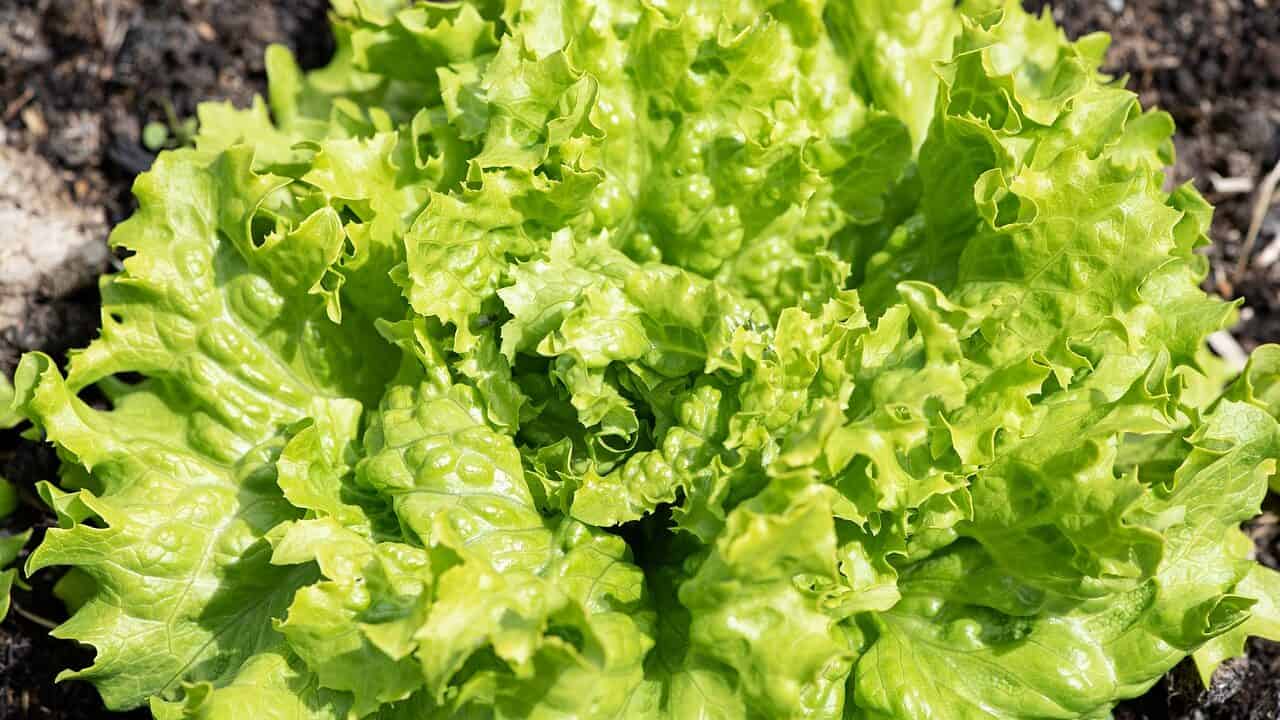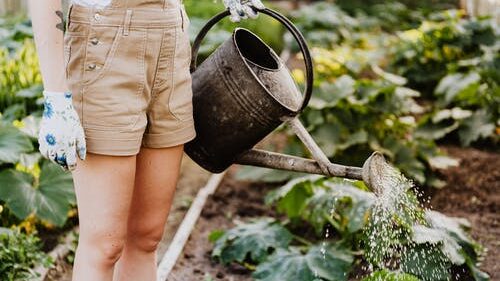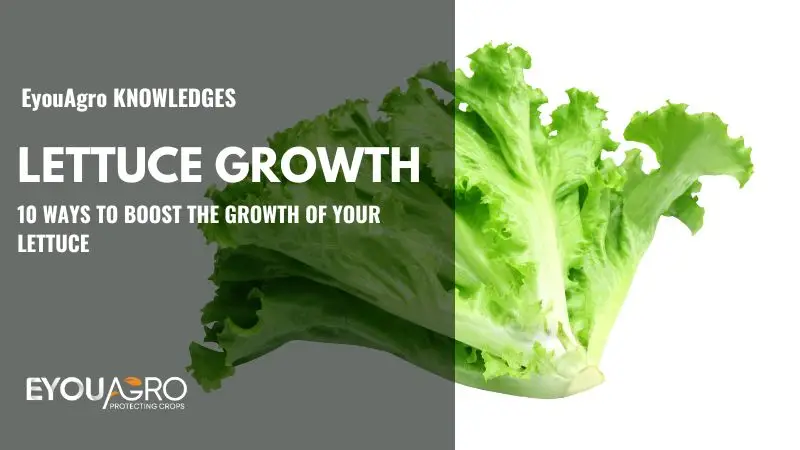Lettuce isn’t just a simple side dish anymore. It’s the best way to add fresh vegetables and important vitamins to your diet, especially if you’re on a budget.
Growing lettuce is great. Even better is knowing how to boost its growth.
There are some things you can do to increase the growth of your lettuce so it’s more nutritious and delicious. And today, you can use the tricks immediately to boost the growth of your lettuce.
But before that, let’s see the benefits of growing lettuce.
Benefits of Growing Lettuce
The benefits of lettuce vary depending on the nutritional content of each kind. Even so, here are the advantages of venturing into this noble venture.

Nutritional Value
The nutritional value of lettuce varies depending on the kind. You will find a large amount of vitamin A and microscopic vitamin C and iron levels in almost all lettuces.
Hydration
Over 95% of raw lettuce is water. As a result, eating lettuce keeps the body hydrated. Although drinking liquids is essential, water included in foods can also help you stay hydrated.
Better Vision
Lettuce is high in vitamin A, which is vital for eye health. You can reduce the risk of cataracts disease by taking vitamin A. Vitamin A is also beneficial in preventing macular degeneration.
Bone Density
Lettuce is high in vitamin K, which supports bone health. Vitamin K can also help you avoid bone fractures if you get enough of it.
Now that we know some of the beautiful benefits that lettuce possesses let’s look at some tips on boosting its growth.
Types of Lettuce you can grow to include:
- Looseleaf
- Romaine
- Oakleaf
- Iceberg
- Summer crisp
- Butterhead
Ways to Boost the Growth of Your Lettuce
Lettuce is a cool-season crop that thrives in most climates during the spring and fall.
It’s a terrific leafy green to cultivate because it grows fast, produces for a long time, and requires little maintenance as long as you water it well. It also grows well in garden beds and containers, making it an excellent choice for tiny spaces. Here’s how you can enhance the growth of your lettuce.
Plant a Wide Range of Lettuces
Start by growing at least three or four different lettuce types, even if your garden is limited. That way, if one doesn’t fulfill your expectations, you’ll have other options to choose from. Select a combination of romaine, butterheads, loose-leaf, and crisp-head lettuce varieties for added variety.
Plant Lettuce at the Appropriate Time of Year
Lettuce is a cool-season crop that thrives in temperatures between 60 and 70 degrees Fahrenheit. Lettuce often becomes bitter in hot temperatures. When growing in hot locations, look for heat-resistant cultivars.
Four weeks before the last spring frost date, start planting lettuce. In warm areas, plant your lettuce again in the fall.
Watering Your Lettuce
When you plant your lettuce in coarse, sandy soil, you will need to water more frequently than when you grow your lettuce in biologically rich, water soil-like humus. When it’s hot outside, water more regularly, and when it’s raining, don’t water at all.
Use a hose pipe or a watering can to water your plants at least once a week. To keep extra moisture off the lettuce leaves, avoid overhead watering. Instead, consider placing drip irrigation down the rows to irrigate the roots.

Lettuce Mulching
Mulching the soil surrounding young lettuce plants with an organic substance like chopped leaves, compost, grass clippings, straw, or even shredded paper keeps the soil moist and keeps weeds at bay. Organic mulches that layer the soil above plant roots disintegrate over time, improving soil structure, drainage, and nutrients.
Exposure to the Sun
Lettuce should get around 6-7 hours of direct sunlight per day, with the rest spent in partial or complete shade.
When it comes to cultivating lettuce, the intensity of sunshine that the plants receive is more important than the amount of sunlight they receive. Use the Greenhouse shade cloth to control the quality of the sunshine the lettuce heads receive.
Applying Fertilizer to Your Lettuce
When you plant your lettuce seeds, the soil must be fertile and rich because your lettuce plants will require nourishment as they grow. Because lettuce is a crop that may be harvested and come again, it requires a lot of fertilizer to generate new leaves for the following produce.
Every two weeks, apply balanced water-soluble or granular fertilizer to your lettuce plants.
Transplanting Your Lettuce
Allow your lettuce to harden off for 7–10 days before transplanting. Bring them outside for a few hours at a time, extending the time each day. Prepare your soil bed by softening the soil and, if possible, adding compost.
Don’t bury the stem of your lettuce when transplanting it. Lettuce stems, unlike tomatoes and other plants, do not develop roots. After planting, water them to keep the soil moist as they grow. If there is a chance of frost, make sure you have your season enhancers on hand.
Taking Care of Insect Pests
Caterpillars, the most common insect pest of lettuce plants, can kill seedlings and eat the top and leaves of adult plants. Maggots attack seedlings, beetles eat leaves, stems, and roots, and wireworms eat germinating seeds.
Introducing predatory insects and installing insect-proof netting into the lettuce field as an alternative to chemical control measures can help manage insect pests. Mulch and plowing procedures can also assist in lower pest infestations before planting.
Bolting
Warm temperatures (above 70°F / 20°C) or variations in day length promote bolting, which is a typical problem. When a lettuce plant bolts, it produces a central stem and seed stalk, as well as bitter-tasting leaves.
Cover plants with a shade cloth to provide filtered light and delay bolting. Continue watering even throughout the hottest stages of the growing season.
In the summer, planning your garden so that lettuce is under the shade of taller plants like tomatoes or sweet corn can help to prevent bolting.
Harvesting Your Lettuce
Loose-leaf lettuce is distinct from head lettuce in that you can pluck the leaves as they grow rather than waiting for a crown or heart to form. Pluck about an inch above the head of the loose-leaf lettuce plant using a pair of shears or your fingers.
When picking, do not touch the inner leaves. These leaves will mature into new leaves, ready to be harvested in seven to ten days. Uprooting the entire plant or harming the base will impede lettuce development, so be careful not to rip, pull, or cut the crown while plucking leaves.

Conclusion
Lettuce is a good source of vitamins and is also suitable for hydration. Lettuce is easy to grow and has a short growth span. They are also a harvest as it grows a type of plant, and therefore you are assured of an all-year-round supply of lettuce. Start using the above tips and take your lettuce growing adventure to a whole new level.
Eyouagro has been in existence since 1996. We aim at helping you protect your farm produce from harsh weather conditions and stubborn pests using net protection. We are an affordable solution that uses high-quality material to manufacture our nets.
We have versatile solutions to all your needs, including wind, sun, wind, and pest protection. Our quality is guaranteed.
To find out which netting protection is best for your garden, contact us, or order online at Eyouagro









